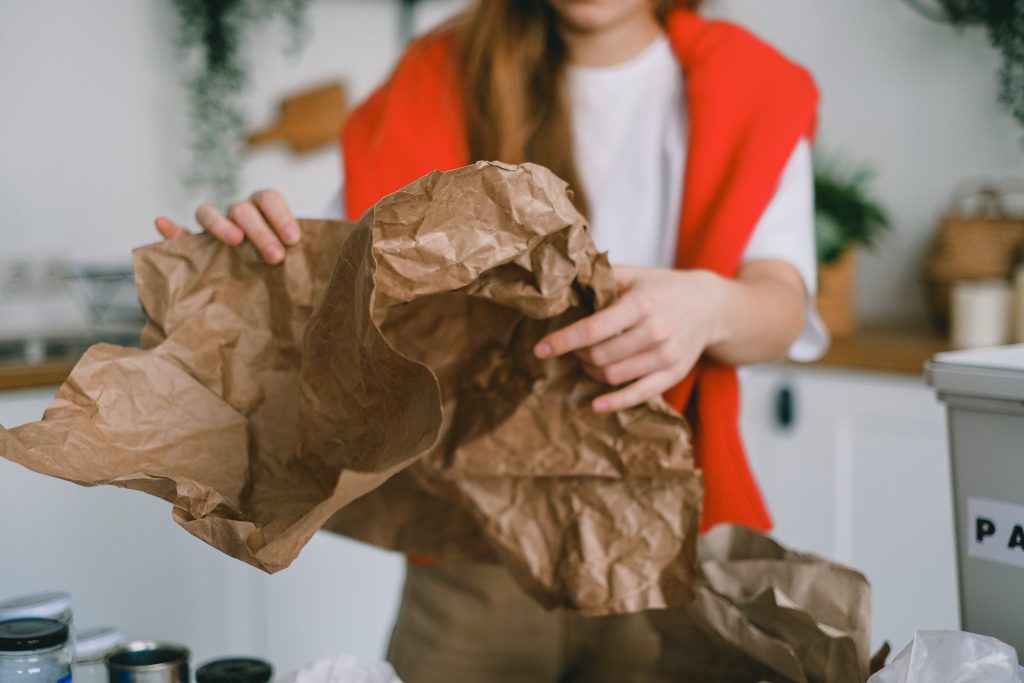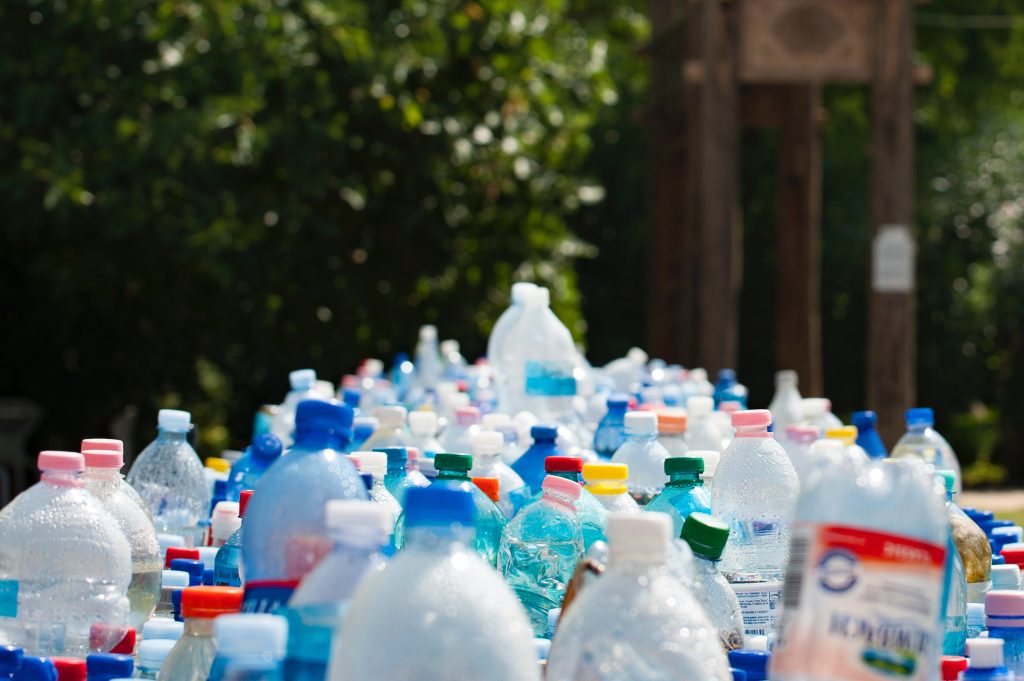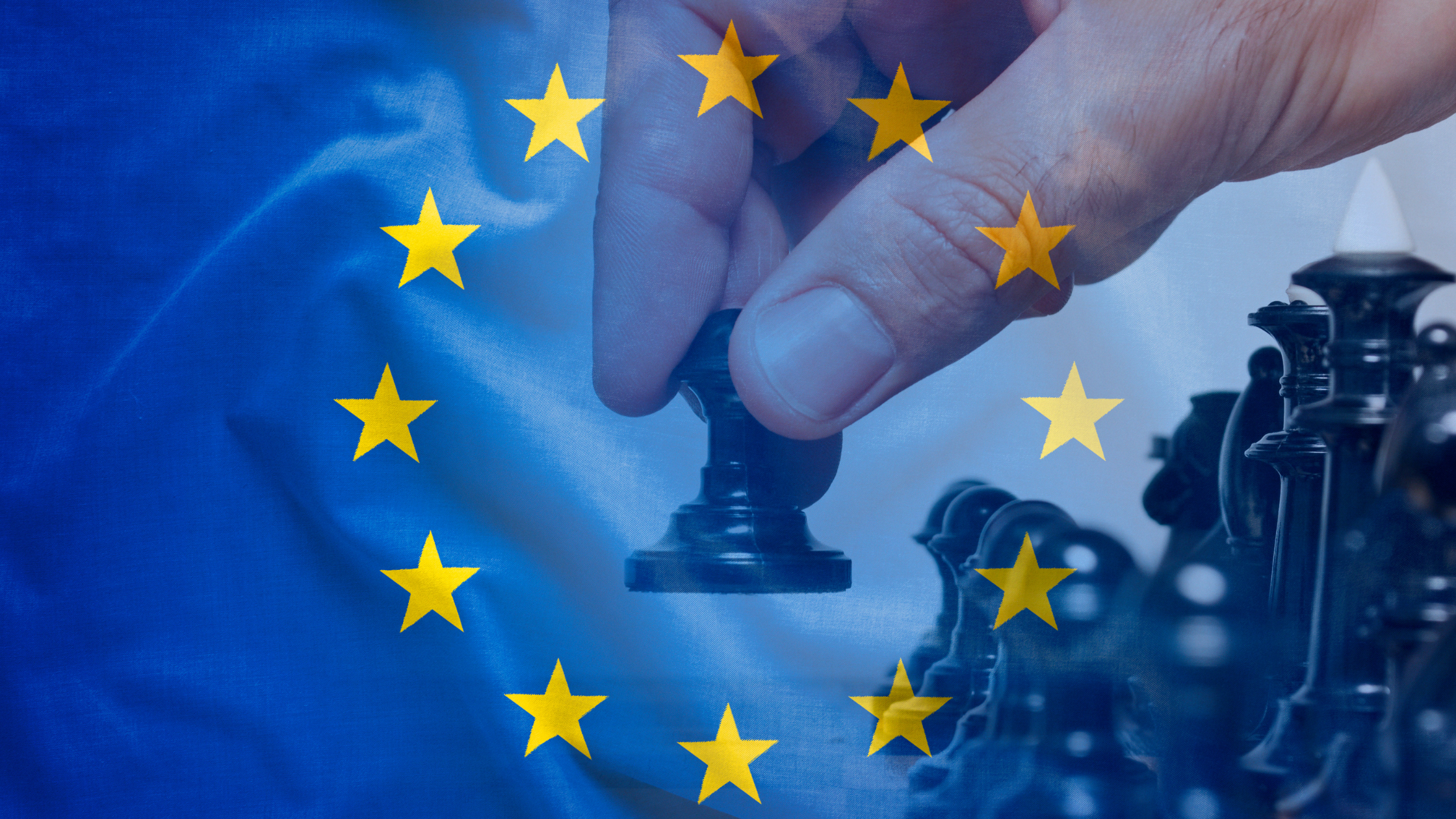The current EU Packaging Directive is set to be replaced by a new EU Packaging and Packaging Waste Regulation (PPWR). As of today, this new EU Packaging Regulation PPWR has not yet fully come into force. However, it is already clear that the regulation will have significant consequences for online commerce within the EU. This is especially true for small businesses shipping to various European countries, but the regulation also impacts fulfillment service providers, marketplaces, and private households.
Sounds complicated? It is. But don’t worry. We explain the most important changes and show what needs to be considered, especially for e-commerce sellers in detail!
Key Aspects of the New EU Packaging Regulation PPWR for e-Commerce:
- What online sellers can expect
- Implementation of the EU Regulation in individual member states
- Implications for marketplaces, fulfillment service providers, and individuals
- Positive aspects of the regulation
- Criticisms from the e-commerce sector regarding the draft
- Optimal scenario for e-commerce sellers – Our proposal for adjustment
Background of the PPWR:
- What is the EU Packaging & Packaging Waste Regulation?
- Objectives and reasons for the regulation
- Milestones in EU legislation: What is the basis for the new Packaging Regulation and how did it come into force?
- What is the difference from the current EU Packaging Directive?
- When will the regulation come into force?
Key aspects of the new EU Packaging Regulation PPWR for e-Commerce

Mit dem Laden des Videos akzeptieren Sie die Datenschutzerklärung von YouTube.
Mehr erfahren
What online sellers can expect
Requirements for substances in packaging – Article 5
Packaging that enters the market must be produced to contain no or only a minimal amount of harmful substances. This applies not only to the packaging material itself, but also to all components it comprises, such as prints or writings.
It is important that these harmful substances are present in the smallest possible amount both in the packaging and in any waste generated during its disposal (such as recycled materials, ash, or other waste products). The aim is to minimize the environmental impact of these harmful substances at every stage of the packaging’s life cycle.
In online trade, shipping packaging is subject to stricter requirements and guidelines.
Recyclability of Packaging – Article 6 (1)
In line with the circular economy, all packaging put on the market must be recyclable. This goes hand in hand with Article 5 and minimizing hazardous substances.
The current draft’s definitions of what is considered recyclable are somewhat cryptic and vague. Some of the requirements will also be specified in the coming years and established in coordination with the countries.
In general, packaging is considered recyclable if it meets the following requirements:
a) They should be designed with recycling in mind. Characteristics include that the packaging components are separable for recycling and recyclable in their individual parts. In addition, established methods for collection, sorting, and recycling should be considered in the design of the packaging. It’s important that all parts of the packaging are recyclable with these methods.
b) When packaging must be disposed of, it can be collected separately and assigned to specific waste streams without impairing the recyclability of other waste streams.
So, components must be separable and ideally individually recyclable. If they must be disposed of, they should be assignable to existing waste streams without impairing the recycling of other waste.
Minimization of Packaging – Articles 9 (1) and 21
“(…) The weight and volume, considering the material from which the packages are made, are to be reduced to the minimum necessary to ensure their functionality.”
This should already be a standard for economic reasons – packaging should be as large as necessary but as small as possible to limit material consumption. Packaging, for instance, that aims to increase the perceived size of the product with double walls, false bottoms, or unnecessary layers, should not be circulated.
For traders of electronic goods, regarding filler materials (according to Article 21), the following applies:
The void space ratio must not exceed 50%. Void space refers to the space in packaging filled with filler materials such as paper, air cushions, bubble wrap, foam, or similar. The void space ratio is the ratio between the total volume and the volume of the contained products.

Reusable Packaging – Article 10
Additionally, Article 10 describes what is a reusable packaging. This includes those packages designed to be reused or refilled. This means they should be able to undergo as many cycles as possible under normal usage conditions – the benchmark for packaging is 5 for cardboard and 10 for all other materials. Furthermore, they must be able to be emptied without being damaged, while still maintaining the quality and safety of the product and ensuring its labeling.
Labeling Obligations – Article 11 (1)
“[…] packaging will be labeled with information about the material composition.”
This means that packaging must contain information that enlightens the people receiving or disposing of the products about the ingredients processed in the packaging. This ensures correct disposal, recycling, and reuse.
How do retailers or distributors ensure that the packaging they distribute complies with the respective regulations?
According to Article 14, suppliers of packaging or packaging materials must provide information and documents that certify conformity and inform.
Mandatory Representative and Extended Producer Responsibility – Article 40 (2)
The most important article for all traders who ship to multiple countries in Europe is Article 40 (2).
“A manufacturer shall appoint, by written mandate, a designated representative for extended producer responsibility in each Member State where he first makes packaging available, except in the Member State where he is established.”
This means that every company or online seller that ships goods to a European country in which they do not have a branch must have a representative for extended producer responsibility in each of these countries.
Why this paragraph is particularly critical will be explained later in the post (here).
How the Implementation of the PPWR will look like in individual member states
Article 35 – The countries must designate appropriate authorities responsible for the implementation and enforcement of the obligations.
Article 39 – Manufacturer Register. The member states shall create a register that monitors compliance with the requirements resulting from the regulation. According to paragraph 2, manufacturers are obligated to register in this register. In Germany, this is already being implemented in the packaging register LUCID. In some other countries, there are already waste registers. In the future, online sellers will have to register in each EU member state.
In some countries, it is already mandatory to register!
You need help, getting the right information for you? – Just take a look at our Digital Consultancy Service.
Or do you want us to take care of your compliance? In our Premium EPR Service, you get your personal Key Account Manager taking care of everything.
Implications for marketplaces, fulfillment service providers, and individuals
Fulfillment Service Providers:
The role of fulfillment service providers is described in Article 18. However, little to nothing has changed for them. They just need to ensure that the packaging they handle from their customers meets certain conditions during storage, packaging, addressing, and shipping that do not impair the packaging. These conditions could change in the coming years as packaging materials may evolve.
Marketplaces:
According to Article 40 (3), marketplaces will be required in all countries to check whether the traders selling products, including packaging, are correctly registered in the respective countries. This means that online traders must inform the marketplaces of their registration numbers, and the marketplaces must request these during the registration process. Additionally, traders must assure the marketplaces – with a self-certification – that they only offer packaging that complies with the respective environmental regulations and thus with EU directives.
Individuals:
The regulation also impacts private households and you as an individual.
Especially for environmentally conscious consumers, the disposal of shipping packaging will become easier and more feasible, as materials must be better labeled. Furthermore, it could lead to less packaging waste in private households overall, as packaging is to be minimized and fewer filler materials used.

Positive aspects of the regulation
Circular Economy
Overall, the PPWR is a significant and important step towards sustainability and circular economy within the EU. The legal anchoring of these topics – particularly Extended Producer Responsibility (EPR) – is of great importance. And the countries have more concrete obligations to implement.
Additionally, waste disposal could become easier and more efficient because countries are obliged to establish appropriate systems. (Article 43)
Deposit Systems
By January 1, 2029, deposit systems are to be established in every country. In Germany, this is already normal, but in many other countries, these structures do not yet exist.
Databases and increasing transparency
Another positive aspect is that harmonized databases on packaging are to be established. These should include information on the extent, characteristics, developments, and hazards of materials and packaging volumes and be filled with data from all countries. This could lead to more transparency and comparability.
Criticisms from our point of view for the e-commerce sector
As previously described, we do not view the draft of the new EU Packaging Regulation exclusively positively:
In particular, Article 40 could create trade barriers. Appointing a representative in each member state poses a significant challenge, especially for small and medium-sized businesses. Implementation and taking care of this aspect needs a lot of time and money, many small companies can not afford. So they may have to stop shipping goods to various countries.
Our proposal for adjustment – What would be best for e-Commerce
In the best case, Article 40 (2) could be omitted.
Within the EU, reporting and registration should be uniformly regulated so that in the best-case scenario, one only has to join a single take-back system. Companies based outside the EU should then only have a single authorized representative for the entire EU.
Alternatively, exceptions for micro-businesses or smaller quantities should be included. Companies would then be required to register and appoint representatives in the respective countries depending on the quantities.
We have already published a press release on this: You can read it here.
Background on the EU Packaging Regulation PPWR
What is the EU Packaging & Packaging Waste Regulation?
The upcoming EU Packaging Regulation PPWR is designed to replace or expand the current directive, contributing to the harmonization of existing packaging laws.
Its primary goal is to counter the continuous increase in packaging waste. The main objective is to reduce packaging waste in the EU by at least 15% by 2040 compared to 2018.
The regulation focuses on improved recyclability of packaging, mandatory quotas for reusable packaging, and minimum recycled material content in packaging. Similar to the existing directive, the new regulation requires online retailers and other companies to take responsibility for the disposal and recycling of packaging waste, in line with extended producer responsibility.
Objectives and reasons for the new EU PPWR
When one thinks of packaging, they often directly imagine large piles of waste and garbage. And this is true – they are the first things to be disposed of and are usually just a means to an end. Yet this purpose is indispensable, as they protect products and enable their transport.
At the same time, the production of packaging is a significant economic sector in the EU. However, the varying concepts and regulations in the member states, especially in terms of labeling, recyclability, and reusability, create obstacles to the smooth functioning of the internal market. These discrepancies create legal uncertainties, which in turn hinder investments in innovative and environmentally friendly packaging solutions.
Additionally, packaging represents a central environmental problem. They consume large amounts of primary raw materials – 40% of the plastics and 50% of the paper used in the EU are for packaging. The increasing use of packaging has not only led to a rise in CO2 emissions in recent years but has also made recycling more difficult.
Especially when they cannot be collected separately due to their design.
Between 2012 and 2020, the proportion of non-recyclable packaging has significantly increased, and many countries are struggling to meet the recycling targets set out in Article 6 of Directive 94/62/EC.
This situation emphasizes the urgent need for an EU-wide packaging regulation that not only strengthens the economy but also serves environmental protection.

Milestones in EU Legislation:
December 1994 – Directive 94/62/EC
Directive 94/62/EC sets out the EU’s rules for the management of packaging and packaging waste. It states that EU countries must adopt measures to minimize the amount of packaging waste and its environmental impacts. The goal of the directive is to harmonize national measures for the disposal of packaging waste and to improve environmental quality by reducing the impact of waste.
May 2018 – Amendment Directive (EU) 2018/852
This complements and renews Directive 94/62/EC. This includes measures to prevent packaging waste and promote the reuse, recycling, and other forms of recovery of packaging waste. Here, the focus is placed on the model of the circular economy.
Where does the EU Packaging Regulation come from?
December 2020 – Based on conclusions of the Council, it was decided that by 2030 all packaging put on the market within the EU should be reusable or recyclable in an economically feasible manner.
February 2021 – With this background, a new action plan for the circular economy was decided, and a legislative proposal for it was demanded.
November 2022 – A proposal for a new regulation was made by the EU Parliament and the Council.
December 2023 – A legislative proposal from the European Council was published. This can be read in full here: General approach
Now final negotiations with the countries are pending, and then the new regulation could come into force from 2025. Until then, the current directive and its amendments continue to apply.
What exactly is the difference to the current Packaging Directive?
The need for a packaging regulation as opposed to the current packaging directive is already justified in the first draft of the new regulation 2022 by the European Commission:
“A regulation ensures that all 27 member states implement their obligations simultaneously and in the same way.”
A directive is binding for member states in terms of the goal but leaves the choice of form and means to the national authorities. A directive must first be transposed into national law, giving member states leeway in the exact design of the rules. This ultimately means that directives can be implemented differently in each country, as is currently the case with the packaging directive.
In contrast, a regulation is binding in all its parts and applies directly and equally in every EU member state. It does not need to be converted into national law, but has a direct effect. This ensures uniform rules throughout the EU.
This aligns the requirements for all market participants in the countries. It creates the necessary legal certainty, reduces distortions of competition within the EU, and sends signals to market participants outside the EU.
As the disposal and recycling structures continue to occur separately in each member state, the requirements for online retailers and sellers with international shipping to oversee everything remain high.
In our digital service, we continue to keep our customers informed about all EPR processes, or take over the Europe-wide EPR compliance management in our premium service.
When will the new EU Packaging Regulation come into force?
The text of the law is not yet finally decided, so a lot is still open. In March 2024, the EU Council and Parliament reached a preliminary agreement on the PPWR. The next step is for the regulation to be presented to the plenary of the EU Parliament at the end of April. Therefore, we expect further developments on this matter in the second quarter of 2024.
We regularly inform about this in our newsletter and on our social media channels – and of course also about other relevant topics – such as the latest developments on textile EPR, country-specific updates (from e.g., Denmark, Sweden or Finland) or the battery regulation BATT2 and obligations in the EU.
Currently, it appears that the EU Packaging Regulation PPWR could formally come into effect at the end of 2024 or the beginning of 2025. Its application would begin with a transition period of 18 months.
If you have any other comments on the development or would like to discuss it, please feel free to send us a message.
Easily manage the PPWR across Europe with ecosistant
We offer a variety of services that allow you to prepare for the new packaging regulation today. Our Digital EPR-Consulting Service provides you with simple and personalized step-by-step instructions, helping you to gain an overview of your EPR obligations for packaging and other waste streams across Europe, enabling you to comply on your own. Thanks to our practical subscription, we keep users constantly up-to-date for their countries, ensuring that all changes brought about by the PPWR will be incorporated into our guides. This is the simplest way to find appropriate take-back systems and Authorized Representatives for each country!
It gets even easier with our Premium EPR-Management Service. Here, you receive a personal key account manager, and we take over your EPR management across Europe for you. This way, you become compliant today and will remain so even after the new PPWR comes into effect.
Here are more interesting articles for you:
German packaging law: Cheap packaging license 2024 for e-commerce
LUCID Packaging Register: Background and Guide
